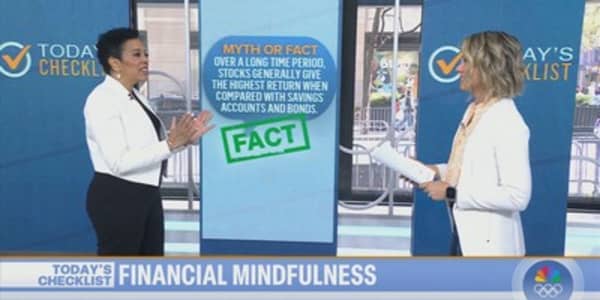The stock market is having a holiday party. But financial advisors urge investors to use caution for before joining in.
"Don't fall prey to irrational exuberance," said Ted Jenkin, a certified financial planner and the founder and CEO of Oxygen Financial in Atlanta. He's also a member of CNBC's Advisor Council. "Things are never as bad nor as good as they seem."
Over the last year, the S&P 500 is up by more than 19%, and the Dow Jones Industrial Average has risen 11%, as of the market's close Wednesday. A $1 million investment in the S&P 500 on Dec. 12, 2022, would be worth nearly $1.2 million today, according to Morningstar Direct.
The last few days have seen some of the steepest increases after a bevy of positive economic data and hints from the Federal Reserve that it'll cut interest rates in 2024. On Wednesday, the Dow closed above 37,000 for the first time ever.
What should you do amid the market rally? Here's some advice from Jenkin and other members of CNBC's Advisor Council.
'Stick to your goals'
Investors shouldn't make any big changes to their investment strategy based on one short period in the market, Jenkin said. Instead, "stick to your goals and your time frames," he said.
Marguerita Cheng, a CFP and the CEO of Blue Ocean Global Wealth in Maryland, said it was exciting to see positive returns. But investors who pull out now in an effort to lock in gains or access cash will likely regret it.
"The most challenging aspect of investing can be staying invested," Cheng said. "I advise clients to remember that the time they are in the market is more important than trying to time the market."
Indeed, over the last 20 or so years, the S&P 500 produced an average annual return of around 6%. But if you missed the 20 best days in the market over that time span, your return would shrivel to 0.1%, according to an analysis by Charles Schwab.
"The market keeps going up so even though it's at a high, it might be even higher in the future," said CFP Sophia Bera Daigle, founder of Gen Y Planning in Austin, Texas.
Dramatic ups and downs aside, history reveals the market reliably gives more than it takes over long periods.
Between 1900 and 2017, the average annual return on stocks has been around 11%, according to calculations by Steve Hanke, a professor of applied economics at Johns Hopkins University in Baltimore. After adjusting for inflation, that average annual return is still 8%.
Market rally, market slump: Do the same thing
It might sound counterintuitive, but investors should probably not do anything different whether the market is green or red, said Ivory Johnson, a CFP and founder of Delancey Wealth Management in Washington, D.C.
"Review your risk tolerance, time horizon and ask if anything has changed," Johnson said.

Big drops and rises in the market can also be a good time to rebalance your portfolio, said CFP Cathy Curtis, founder and CEO of Curtis Financial Planning in Oakland, California.
"It's quite possible that the rally of the last few months has created an overweight to stocks versus bonds in a person's portfolio," Curtis said.
For example, if you want your money allocated 70% to stocks, and 30% to bonds, you may now or at least soon need to sell some stocks and add to your bonds, she added.






